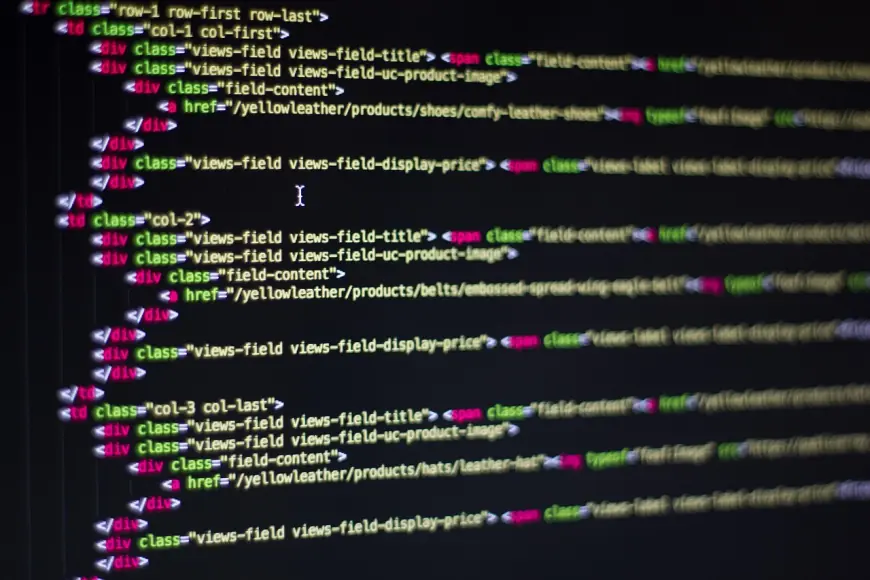CSV Conversion Demystified - HTML TSV, PDF and SQL
Data conversion isn't just about getting from point A to point B—it’s about making data feel native in its new environment. A spreadsheet full of comma-separated values (CSV) may look straightforward, but transforming that data.

Data conversion isn't just about getting from point A to point B—it’s about making data feel native in its new environment. A spreadsheet full of comma-separated values (CSV) may look straightforward, but transforming that data into HTML tables, TSV files, PDFs, or SQL scripts calls for careful consideration.
Each format speaks its own language, and if you don’t translate with attention to tone and structure, you risk losing meaning. That’s why a good converter doesn’t just shuffle symbols—it carries the intent of the data forward in a way that’s readable, practical, and trustworthy. In this post, we’ll walk through what makes each conversion path unique, and how to approach them with the care they deserve.
CSV to HTML
Turning a CSV into an HTML table sounds simple, but doing it well means thinking like both a developer and a reader. You want something that’s easy on the eyes and logical to navigate—especially for people using screen readers.
That means properly handling headers, escaping special characters, and preserving encoding so nothing weird happens with accents or foreign scripts. The best converters build semantic structure too—things like `<thead>`, `<tbody>`, and `<th>` elements aren't just decorative, they help assistive technologies interpret the table. Long rows and wide datasets need smart layout strategies maybe scrolling, column stacking, or pagination. If users are going to interact with the table—sorting, filtering, searching—it helps when those features are built right into the output. Styling should live in CSS, not inline clutter, and every piece of dynamic content needs to be sanitized to avoid security pitfalls. A really solid HTML conversion isn’t just good-looking—it’s usable, safe, and accessible.
CSV to TSV
Replacing commas with tabs might seem trivial, but it’s not a cut-and-paste job. CSV files often contain tricky things like quoted strings with commas inside, multi-line cells, and escaped characters, so a converter has to parse properly before it swaps out delimiters. TSV is cleaner in many cases—especially for command-line tools—but it still needs to be handled carefully. You’ve got to decide how to treat literal tabs and newlines, whether to keep quoting, and how to escape special characters. White space matters too—leading zeros, spaces in codes, and weird encodings shouldn’t get trimmed or lost. For technical users piping data into Unix tools like `awk` or `cut`, preserving the lexical form of values is crucial. What seems like a tiny change can mess up downstream processing if a converter gets lazy. A good TSV output stays true to the original while adapting for line-by-line precision.
CSV to PDF
Converting CSV to PDF is like packaging data for presentation it stops being fluid and becomes fixed. That shift raises questions about how to organize it—where do page breaks happen, how do headers behave, and what do you do with extra-long rows?
Typography becomes more important than ever—good font choices can make dense tables readable instead of overwhelming. You’ve got to balance fitting content with not crowding it, wrap text gracefully, and make space for critical columns. International formats add complexity some data reads right-to-left, some depends on cultural formatting conventions.
If accessibility matters (and it should), the PDF needs to be tagged properly—so it’s searchable, selectable, and understandable by assistive tech. For big datasets, it helps to generate pages incrementally and maybe even include summaries or visual cues to guide readers. PDF isn't just a snapshot—it’s a designed experience, and a thoughtful converter makes it one worth sharing.
CSV to SQL
This conversion takes raw data and lines it up for insertion into a relational database, which is no small feat. At the heart of it is schema what type is each column, which ones allow nulls, and how do they relate? You can guess types, but getting it wrong leads to broken queries or bad interpretations of values. If you’re targeting a specific database (PostgreSQL, MySQL, etc.), you have got to respect its quirks—how it treats text, numbers, time zones, and constraints.
Efficiency matters too instead of inserting one row at a time, it’s smarter to batch them, use bulk loaders, and postpone indexing until after the load. Security isn’t optional either—escaping values, protecting against injection, and managing nulls vs. empty strings is part of the job. When you’ve got related tables across multiple CSVs, ordering the load and managing foreign keys can make or break your setup. And if something goes wrong, you want visibility logs, error messages, rejected rows, and dry runs. The best converters give you not just the SQL statements, but the confidence to run them.
What's Your Reaction?
 Like
0
Like
0
 Dislike
0
Dislike
0
 Love
0
Love
0
 Funny
0
Funny
0
 Angry
0
Angry
0
 Sad
0
Sad
0
 Wow
0
Wow
0




















































